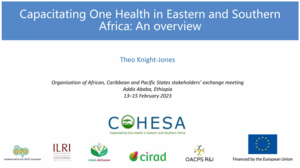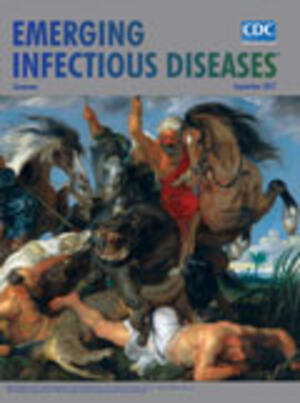
Population attributable fractions of farm vector tick (Rhipicephalus appendiculatus) presence on Theileria parva infection seroprevalence under endemic instability
Abstract
The primary objective of this study was to assess the impact of Rhipicephalus appendiculatus tick presence (exposure variable) on Theileria parva infection seroprevalence (outcome variable) in a group of cattle belonging to a farm using population attributable fractions (PAF). The analyses were based on a representative sample of 80 traditional smallholder mixed farms. The farms were selected by first stratifying the population administratively and implementing a multistage random sampling in Mbeere district in Kenya. The PAFs were estimated using the stratified, Bruzzi, and sequential partitioned PAF approaches. A secondary objective was, thus, to evaluate the impact of the approaches on the PAF estimates. The stratified and Bruzzi approaches estimated proportion of T. parva infection cases directly attributable to the exposure after controlling for confounding by agro-ecological zone (AEZ). The sequential partitioned PAF approach estimated a PAF associated with exposure after adjusting for any effect that the AEZ may have had by influencing the prevalence of the exposure. All analyses were carried out at the farm level where a farm was classified as infested if the tick was found on cattle on a farm, and infected if at least one animal on a farm was positive for T. parva antibodies. Variance estimation for PAFs was implemented using ‘delete-a-group’ jackknife re-sampling method. The stratified PAF (26.7% [95% CI: 9.0%, 44.4%]) and Bruzzi PAF (26.4% [95% CI: 9.6%, 43.2%]) were consistent in estimating a relatively low impact of farm vector tick presence with a relatively high level of uncertainty. The partitioned PAF (15.5% [95% CI: 1.5%, 29.6%]) suggested that part of the impacts estimated using the stratified PAF and Bruzzi approaches was driven by AEZ effects. Overall, the results suggested that under endemic instability in Mbeere district, (1) presence of R. appendiculatus was not a good indicator of T. parva infection occurrence on a farm; (2) ecological variation could play a role in determining infection impacts. This study provides a preliminary basis for evaluating the potential value and utility of estimating PAFs for variables amenable to control in tick-borne diseases (TBDs) epidemiological studies.
Citation
Gachohi, J.M., Kitala, P.M., Ngumi, P.N., Skilton, R.A. and Bett, B. 2013. Population attributable fractions of farm vector tick (Rhipicephalus appendiculatus) presence on Theileria parva infection seroprevalence under endemic instability. Preventive Veterinary Medicine 108(2-3): 103-113.










